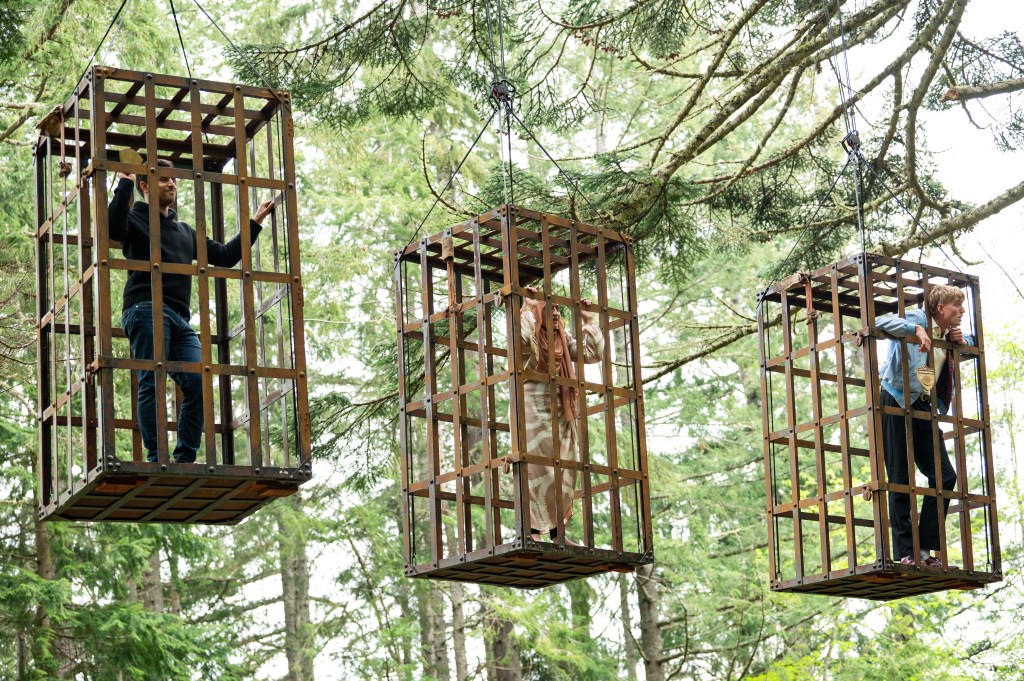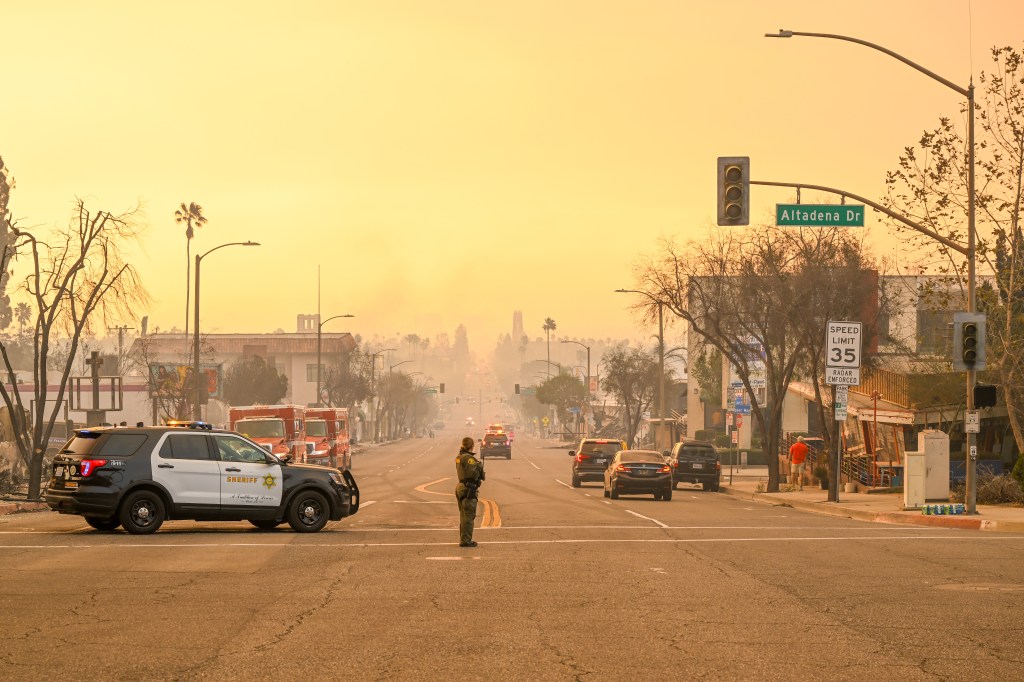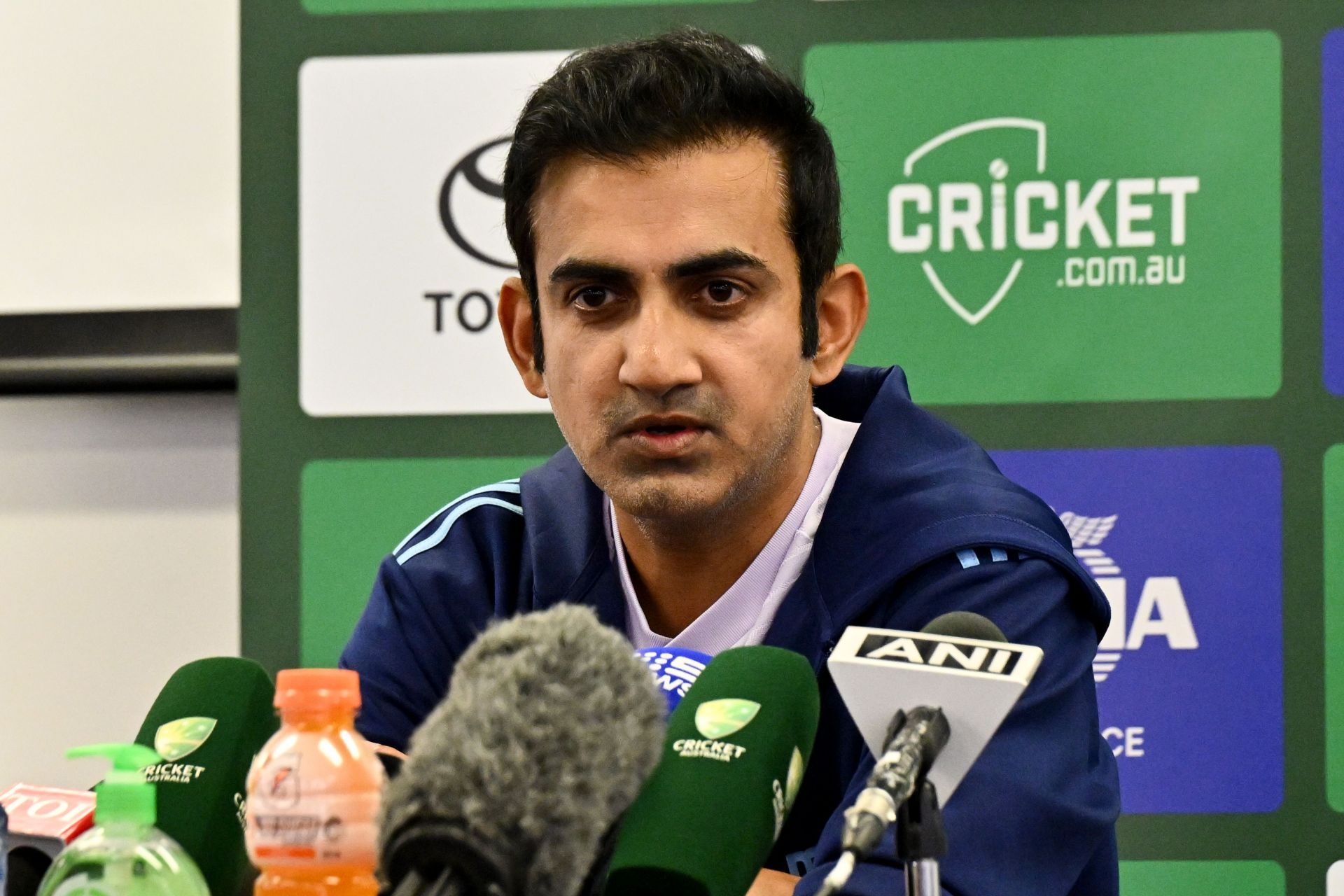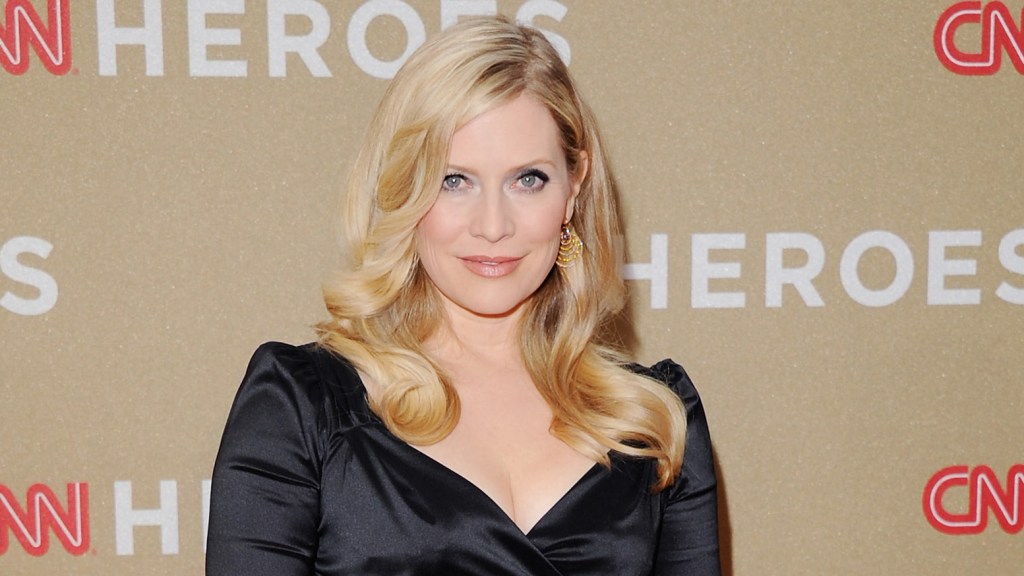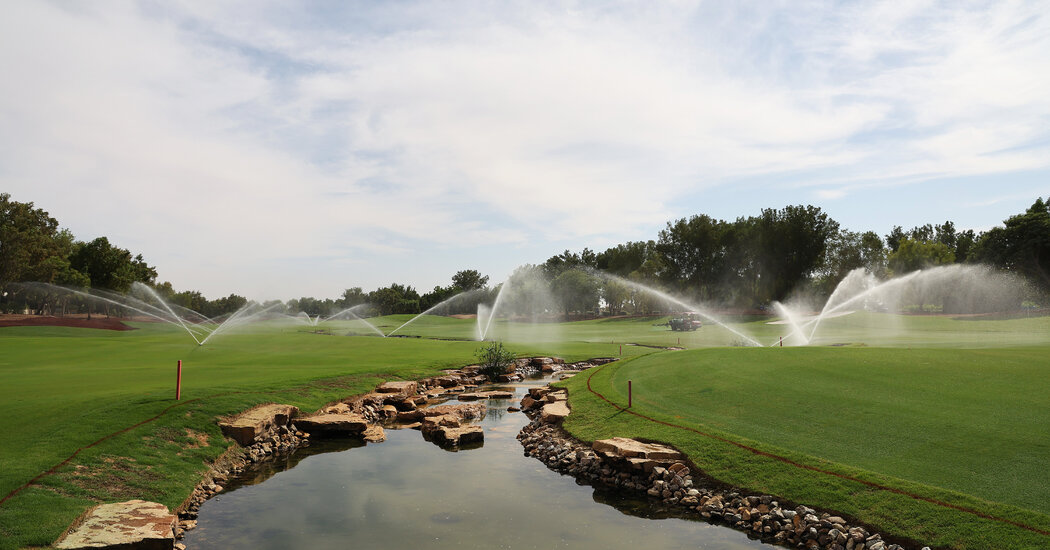
Up close, Rory McIlroy teeing off at the Earth Course at Jumeirah Golf Estates, the host of this week’s DP World Tour Championship in Dubai, United Arab Emirates, looks no different than it would anywhere else in the world.
His swing is balanced, fluid and powerful, and his ball flies far and straight, landing on a lush green fairway. There’s water around, some rocks and sand. The skyscrapers surrounding the course present a nice contrast to an always blue sky. But overall, the course looks like another pristine tournament venue for elite professional golfers.
Yet what happened to get the Earth Course ready to host the best players on the DP World Tour, let alone to create it out of the desert when Greg Norman built it in 2009, is vastly different to how other top venues on the DP World Tour are prepared.
Dubai receives only about four inches of rain a year. Summer temperatures can surpass 120 degrees Fahrenheit (49 degrees Celsius). The sun is so extreme that working outdoors from 12:30 p.m. to 3:30 p.m. in the peak summer months in the United Arab Emirates is strictly prohibited.
So how does an area so inhospitable to being outdoors, let alone playing golf, have such a premier facility that serves as the venue for the culmination of the tour’s season?
The answer is very carefully and very deliberately.
As temperatures rise to record levels around the world, whether golf should be played in the desert at all is a legitimate question. If it’s being done, how it’s done is becoming more important from both a sustainability point of view and a pure financial analysis of the cost to have verdant grass in a windy, sun-baked desert.
“For me, it can be a stark visual seeing a golf course in a desert, particularly when you’re flying in,” said Cole Thompson, the director of green section research for the United States Golf Association. “The desert golf courses are actually the most efficient users of water out of necessity.”
Corey Wade Finn, a native of New Zealand and the director of agronomy at Yas Links, which hosted the Abu Dhabi HSBC Championship last week, has made his golf career in the United Arab Emirates.“One of the biggest challenges is managing the staff when it’s so hot and humid,” he said. “It drains you just being outside.”
Finn said that from June 15 to Sept. 15 rules on not working outside at the height of the heat are enforced. But even in the mornings, the heat, already well above 100 degrees Fahrenheit (38 degrees Celsius) with high humidity, is something that needs to be managed.
“We feed the guys electrolytes, but even with the best measures the heat gets people,” Finn said. “It’s just monitoring the guys and making sure they’re OK.”
With the grass, the high heat and direct sun speeds growth. But if anything, the crew is trying to slow the growth. Finn said his crew had to cut the putting greens at Yas Links four times a day so the ball rolls at a consistent speed for players throughout the day.
The humidity near the water creates problems with disease and fungus as the turf can get too moist in spots. To use that water to irrigate the course, it has to be desalinated and mixed with reclaimed wastewater. The grass at Yas Links is a special breed called paspalum that thrives in that combination.
The climate is different an hour away at Jumeirah, with less humidity but equally high temperatures. The course uses Bermuda grass, a popular warm-weather grass.
But the hosts of the DP World Tour Championship are aware of the ecological line they’re walking. Part of the pretournament promotion is a program to “measure, reduce and offset your event-related greenhouse gases.”
“The biggest challenges to maintaining a world-class golf course in the Middle East are the extreme heat and its impact on both turf health and staff welfare, with weather playing a significant role in our maintenance strategies,” said Stephen Hubner, the club manager at Jumeirah Golf Estates.
This year, there were additional challenges from storms in April and increased development around the club, which led to groundwater issues. The high salt content means the water needs to be flushed out to preserve the Bermuda grass.
Managing water is a challenge in these conditions.
“With the right grasses and landscapes, sourcing treated water, and the delivery of best practices and latest technology innovations, the situation is more nuanced, and golf can offer meaningful solutions in watersheds,” said Jonathan Smith, the executive director at the GEO Foundation for Sustainable Golf.
“We are seeing many facilities driving hard to ensure irrigation water is from lower quality, recycled sources,” he said. “State-of-the-art irrigation and soil moisture technologies ensure precision application of water only to priority areas.”
Hovering over all of this, of course, is whether golf courses should even exist in desert climates. The Middle East hosts several events on the DP World Tour in the fall and early winter, just as the PGA Tour stages winter tournaments in the California and Arizona desert.
Golf courses don’t use much water. All of the courses in the United States — about 16,000 — use the equivalent of a day and a half of the U.S. total water consumption for an entire year, Thompson said, or about a half trillion gallons a year. In the most arid environments, like Dubai, the question isn’t as much about conserving water — there isn’t much of it — as optimizing its use.
The PGA Tour equivalent of conditions similar to playing in Dubai is the WM Phoenix Open at the T.P.C. Scottsdale that is held in February. The course looks different during the tournament than it does at other times.
“People either come to the tournament or they see it on TV and it’s beautiful, it’s lush, it’s green,” said Brad Williams, the general manager at the T.P.C. Scottsdale. “Then they come out in June to play it, and it’s not lush and green. We’re a Bermuda grass golf course — it’s great to play on, but it’s just a different color, a whole different golf course in the summer time.”
Ahead of the tournament, the course gets over-seeded with a blend of rye and fescue grass to make it look green. But it also serves an environmental and safety purpose. That overseeding keeps the high-traffic areas from becoming slippery mud pits, Williams said.
Still, like many tournament venues, the other 51 weeks of the year requires different decisions — and facing up to reality in the desert.
“It is what it is,” Williams said. “There is no way to physically make the golf course look the same in the summer as in January and February. We have to do a really good job from an agronomic standpoint.”
And it’s going to change more in response to climate change — the Phoenix area had about 100 days over 100 degrees this summer — and the cost of irrigation. The Tournament Players Club is taking grass off the two courses on its property and adding back native, desert areas.
“We’ll remove 30 acres over the two golf courses in the next five years,” Williams said. “Taking out five to seven acres and converting to native areas each year is going to dramatically decrease our water requirements. If we take out 30 acres, that’s 15 percent of our turf, so it decreases our water consumption by about 15 percent.”
That’s a good investment for the future of tournaments where heat and rain are going to continue to play a big role.
